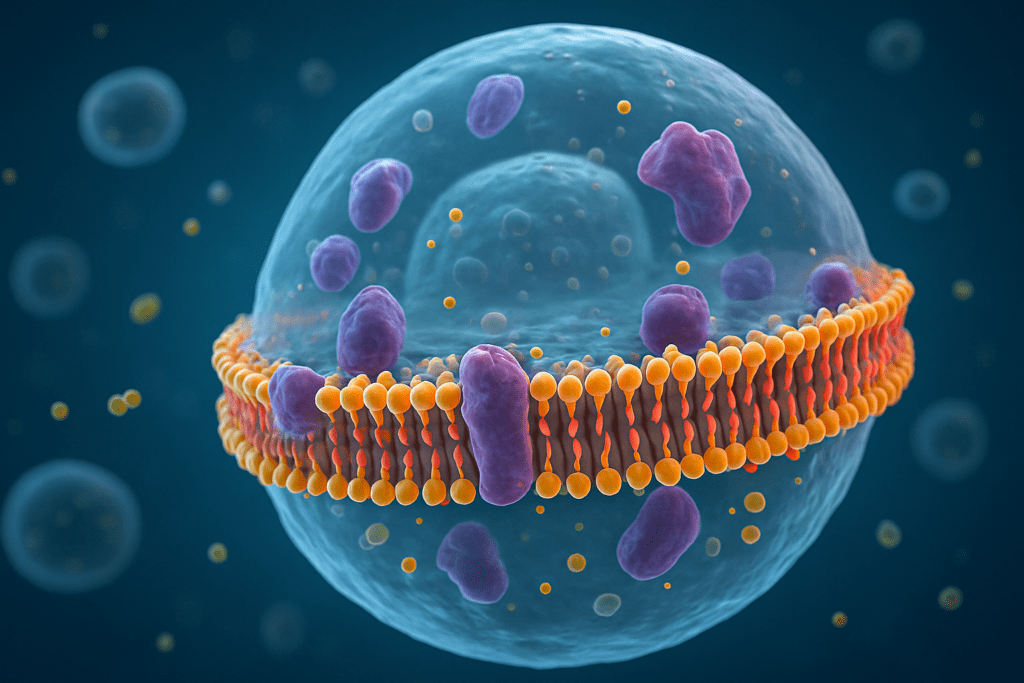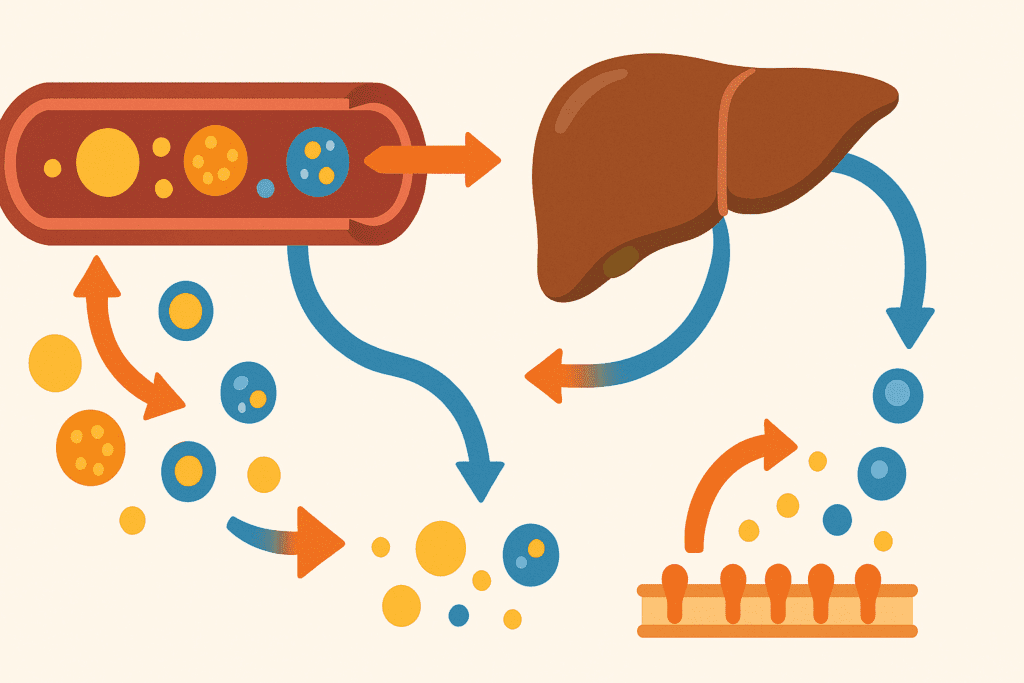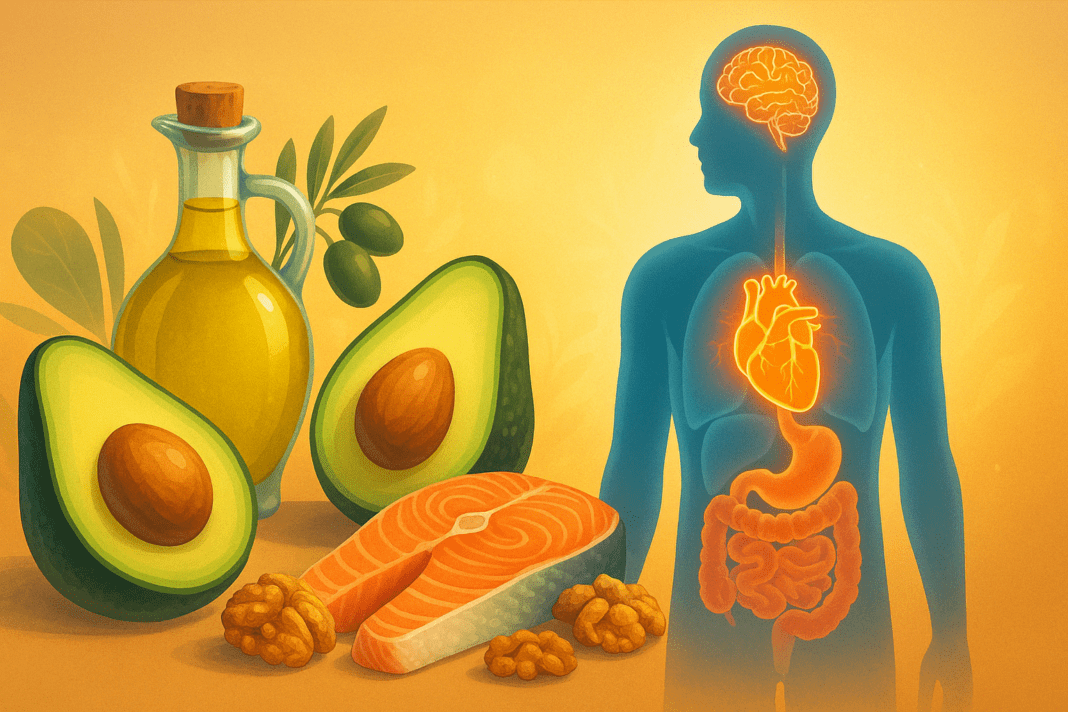Fat often suffers from a reputation problem. In decades past, low-fat diets were championed as the ultimate key to health, and fat became a dietary villain. But modern nutritional science has moved far beyond the blanket vilification of fats, instead recognizing their complexity and indispensability. Understanding the function of fats is not just a matter of nutrition science—it’s essential for making informed decisions about diet, wellness, and chronic disease prevention. For those navigating today’s sea of health information, knowing which of the following is a role of fats and how healthy fats contribute to vital processes is an empowering and necessary step.
You may also like: Macronutrients vs Micronutrients: What the Simple Definition of Macronutrients Reveals About Your Diet and Health

Fats as a Source of Energy and Satiety
Among the many functions fats perform, their role as an energy source is foundational. Fats provide 9 calories per gram, more than double the energy offered by carbohydrates or proteins. This dense energy supply is particularly important for sustaining long-duration activities, supporting cellular metabolism, and maintaining energy balance during periods of fasting or calorie restriction. Without dietary fats, the body must rely heavily on carbohydrate stores, which are more limited and quickly depleted. In this context, one might ask which of the following is a role of fats—energy provision tops the list and provides a clear starting point.
Beyond energy, fats play an important part in satiety—the feeling of fullness after a meal. Unlike quick-burning carbohydrates, fats are digested more slowly, helping to regulate appetite and reduce overeating. The presence of fat in a meal triggers the release of hormones like cholecystokinin (CCK), which signal to the brain that the body is nourished. This hormonal feedback loop is one of the underappreciated roles fat plays in supporting healthy weight management. It is not just about calories, but about how those calories affect the body’s hunger and fullness cues.

Structural Functions of Fats in Cell Membranes
While many understand fats as fuel, fewer recognize their structural importance. Every cell in the human body is surrounded by a lipid bilayer—a membrane primarily composed of phospholipids, a type of fat. These membranes are not just passive barriers; they regulate the movement of substances in and out of cells, anchor proteins, and enable communication between cells. A disruption in membrane integrity can compromise cellular health and function, underscoring the structural function of fats at the most fundamental biological level.
Furthermore, specialized fats such as cholesterol, while often maligned, serve as critical components in membrane fluidity. Cholesterol modulates the stiffness or flexibility of membranes, ensuring that cells maintain the optimal environment for protein function and nutrient transport. Thus, when considering which of the following is a role of fats, cellular structure must be a top contender. Without fats, cells would lose their structural cohesion, and essential physiological processes would falter.

Absorption and Transport of Fat-Soluble Vitamins
Another indispensable function of fats involves the absorption and transport of fat-soluble vitamins—A, D, E, and K. These vitamins are crucial for immune function, bone health, vision, blood clotting, and antioxidant protection. However, they cannot be absorbed in the absence of dietary fat. When fats are consumed with meals, they facilitate the incorporation of these vitamins into micelles, small particles that transport nutrients through the intestinal lining and into circulation.
This relationship highlights why ultra-low-fat diets may inadvertently lead to deficiencies in essential vitamins, even when those vitamins are consumed in adequate amounts. It also reveals the interconnectedness of nutrients and the importance of dietary balance. In practical terms, adding avocado to a salad or olive oil to vegetables not only enhances flavor but also significantly boosts the bioavailability of critical micronutrients. Therefore, one must not overlook the function of fats in optimizing nutrient absorption and supporting long-term health.
Hormonal Regulation and Fat-Derived Signaling Molecules
Fats also serve as the raw materials for hormone production and signaling molecules. Cholesterol, despite its controversial reputation, is a precursor to steroid hormones, including estrogen, testosterone, and cortisol. These hormones govern a vast array of bodily processes, from reproductive function to stress responses. Without sufficient fat intake, hormone synthesis may be impaired, potentially leading to mood disturbances, fatigue, or reproductive issues.
Moreover, certain fatty acids, particularly omega-3 and omega-6 fats, are precursors to eicosanoids—local hormones that regulate inflammation, immune responses, and blood pressure. The balance between pro-inflammatory and anti-inflammatory eicosanoids is crucial in managing chronic disease risk. A diet rich in omega-3s from sources like fatty fish, walnuts, or flaxseeds has been shown to support cardiovascular health and reduce systemic inflammation. These findings illustrate how the function of fats extends far beyond energy provision to include nuanced biochemical roles with wide-reaching health implications.

Brain Health and Nervous System Function
The human brain is nearly 60% fat by dry weight, and its structure and function depend heavily on specific types of fat. Docosahexaenoic acid (DHA), a long-chain omega-3 fatty acid, is a major structural component of brain cell membranes and synapses. It supports neural communication, cognitive development, and memory retention. In infants, DHA is critical for brain and retinal development, while in adults, it helps preserve cognitive function and may lower the risk of neurodegenerative conditions like Alzheimer’s disease.
In this light, understanding the function of fats becomes essential for neurological health. Fatty acids form the insulation around neurons, known as the myelin sheath, which facilitates the rapid transmission of electrical impulses. A breakdown in this insulation, as seen in conditions like multiple sclerosis, results in impaired neural communication and progressive neurological symptoms. Ensuring adequate intake of essential fatty acids, therefore, is a preventive strategy for maintaining brain health across the lifespan.
Immune Function and Inflammatory Modulation
Fats also play an integral role in immune function. Lipids are involved in the construction of cell membranes in immune cells, and certain fatty acids possess direct immunomodulatory properties. For example, omega-3 fatty acids can reduce the production of pro-inflammatory cytokines while enhancing the activity of regulatory T cells, which help prevent autoimmune responses.
This immunological role connects dietary fat directly to chronic disease prevention. Many inflammatory disorders, including cardiovascular disease, type 2 diabetes, and even some cancers, are influenced by systemic inflammation. By supporting the body’s natural ability to regulate inflammation, healthy fats serve as both protectors and modulators. The growing body of evidence linking dietary fat composition with immune resilience underscores the importance of not only how much fat is consumed, but what types are prioritized.

Metabolism and Gene Expression
One of the more complex and less widely discussed functions of fats is their influence on gene expression. Certain fatty acids act as ligands for nuclear receptors such as PPARs (peroxisome proliferator-activated receptors), which regulate genes involved in lipid metabolism, glucose regulation, and inflammation. These mechanisms reveal how dietary choices can exert effects at the genomic level, potentially altering metabolic pathways over time.
In this context, when evaluating which of the following is a role of fats, it becomes evident that gene regulation must be part of the answer. The dietary fats we consume can activate or suppress specific genes, influencing not only present metabolic health but long-term disease risk. This insight supports the personalized nutrition approach, recognizing that individuals may respond differently to various types and amounts of dietary fat based on their genetic makeup.

Cholesterol Transport and Lipoprotein Balance
Another vital function of fats involves their transport through the bloodstream in the form of lipoproteins. These complexes—such as LDL, HDL, and VLDL—carry cholesterol and triglycerides to and from tissues. The balance among these lipoproteins is crucial for cardiovascular health. While LDL has often been labeled “bad” cholesterol, its role in delivering cholesterol to cells is essential. Problems arise when LDL particles become oxidized or present in excessive concentrations.
HDL, often referred to as “good” cholesterol, facilitates reverse cholesterol transport, moving cholesterol away from arteries and toward the liver for excretion. Diets high in trans fats or excessive saturated fat can disrupt this balance, increasing LDL and decreasing HDL levels. Conversely, diets rich in unsaturated fats from nuts, seeds, and fish support healthy lipoprotein profiles. This dynamic showcases how dietary fat quality directly influences lipid transport and cardiovascular disease risk.

Dietary Fat and Chronic Disease Prevention
As nutritional science has evolved, it has become increasingly clear that the type of fat matters more than the total amount. Unsaturated fats, especially polyunsaturated and monounsaturated varieties, are associated with reduced risk of chronic diseases, particularly heart disease and stroke. The Mediterranean diet, for example, emphasizes olive oil, nuts, and fatty fish and has consistently shown protective effects against a range of health conditions.
In contrast, trans fats and industrially processed hydrogenated oils have been linked to increased inflammation, endothelial dysfunction, and heart disease. Saturated fats occupy a more nuanced position, with current research suggesting that their effects may depend on food source and dietary context. For example, saturated fats from dairy may not confer the same risks as those from processed meats. Therefore, understanding the function of fats in chronic disease prevention requires a sophisticated view that considers not just quantity, but quality, diversity, and source.
Misconceptions and the Importance of Dietary Balance
One of the lingering challenges in public health nutrition is the persistence of outdated myths around dietary fats. Many people still fear that eating fat will automatically lead to weight gain or elevate cholesterol levels. However, this oversimplification ignores the differential effects of various fats and fails to account for broader dietary patterns. Replacing fats with refined carbohydrates, for instance, often exacerbates metabolic issues rather than resolving them.
Education remains critical in reshaping public perception. By understanding which of the following is a role of fats—such as nutrient absorption, hormone production, immune support, and brain function—individuals can make more informed and empowered dietary choices. The key lies in encouraging consumption of health-promoting fats while minimizing harmful ones, rather than adopting a blanket low-fat approach.
How to Incorporate Healthy Fats into Everyday Eating
Translating nutritional science into practice is where meaningful change happens. Incorporating healthy fats into daily meals does not require dramatic overhauls. Simple choices—such as cooking with olive oil instead of margarine, adding chia seeds to smoothies, or snacking on almonds rather than chips—can cumulatively support long-term health. For individuals aiming to ensure adequate intake of omega-3s, adding fatty fish like salmon to the diet twice per week is a highly effective strategy.
Incorporating avocado in sandwiches or using tahini as a salad dressing base are delicious, nutrient-dense ways to boost healthy fat intake. These foods also offer fiber, antioxidants, and a variety of vitamins, further enhancing their value. When considering the function of fats in meal planning, these strategies not only improve nutritional quality but also contribute to satiety and enjoyment, key components of sustainable eating habits.
Frequently Asked Questions: Understanding the Function of Fats and Their Role in Health
1. Can the function of fats influence mental health or emotional well-being? Yes, the function of fats extends into the realm of mental health in ways that many people overlook. Essential fatty acids, especially omega-3s like EPA and DHA, are directly involved in neurotransmitter regulation and synaptic plasticity—both critical for mood stabilization and cognitive resilience. Studies suggest that deficiencies in these fats may correlate with higher risks of anxiety, depression, and even bipolar disorder. In clinical settings, omega-3 supplementation has been explored as an adjunct therapy for individuals with treatment-resistant depression. This illustrates that when evaluating which of the following is a role of fats, supporting emotional balance and brain chemistry is a critical, though often underappreciated, function.
2. How does fat intake affect athletic performance and recovery? Athletes often focus on protein and carbohydrates, but the function of fats plays an equally vital role in endurance and recovery. Fats are a primary fuel source during prolonged, moderate-intensity activity and help spare muscle glycogen, allowing athletes to sustain performance longer. They also contribute to anti-inflammatory processes that aid muscle recovery and reduce soreness. Additionally, fat-soluble antioxidants like vitamin E, which rely on fat for absorption, protect muscles from oxidative damage during intense exercise. Understanding which of the following is a role of fats—fueling performance, enhancing recovery, and preventing inflammation—can help athletes fine-tune their nutrition for optimal outcomes.
3. Are there risks to mental function if someone avoids all dietary fats? Avoiding fats entirely, especially over the long term, can result in more than just physical issues—it can also lead to diminished cognitive capacity and poor memory retention. The brain depends on specific fats to build neuronal membranes and maintain synaptic connections, both of which are essential for processing information and learning. When dietary fats are too restricted, the body may lack the necessary substrates to support healthy neurotransmission and mental clarity. Thus, when asking which of the following is a role of fats, protecting cognitive longevity and supporting neural plasticity should not be overlooked. Inadequate fat intake has even been associated with increased risk of age-related cognitive decline.
4. How do different types of fats influence gut microbiota? Emerging research has shown that the function of fats extends to shaping the gut microbiome, a critical player in immunity, metabolism, and mood. Polyunsaturated and monounsaturated fats from plant and marine sources tend to support microbial diversity and reduce inflammation in the intestinal lining. In contrast, excessive consumption of saturated or trans fats can promote gut dysbiosis, an imbalance linked to metabolic syndrome and gastrointestinal disorders. This underscores that which of the following is a role of fats goes far beyond energy provision—it includes maintaining a balanced, resilient internal ecosystem. The type and quality of fats consumed can either nourish or disrupt this delicate microbial environment.
5. Do healthy fats play a role in skin health and aging? Absolutely. One of the lesser-known roles of healthy fats is in maintaining the skin’s structural integrity, hydration, and resilience against environmental stressors. Essential fatty acids contribute to the skin’s lipid barrier, which protects against moisture loss and irritants. Additionally, fats assist in the transport of fat-soluble antioxidants like vitamin E, which help neutralize free radicals that cause premature skin aging. This reveals another layer in answering which of the following is a role of fats—supporting skin cell regeneration and elasticity is a critical one. Chronic deficiency in healthy fats can lead to dryness, dermatitis, and a more rapid appearance of aging.
6. Can fat intake affect fertility and reproductive health? Yes, reproductive health is closely tied to hormonal balance, and fats are instrumental in synthesizing sex hormones like estrogen, progesterone, and testosterone. Both male and female fertility can be impaired by inadequate fat consumption or by overconsumption of inflammatory trans fats. Research has shown that women with low-fat diets may experience irregular menstrual cycles, while men with low DHA levels may exhibit reduced sperm motility. The function of fats in this context is essential—not just for energy, but as raw material for reproductive hormones. Thus, when exploring which of the following is a role of fats, supporting fertility is a biologically fundamental function worth acknowledging.
7. Are there cultural or traditional diets that showcase the function of fats particularly well? Indeed, many traditional dietary patterns highlight how fats can be harmoniously incorporated into healthy eating. The Mediterranean diet, for example, features olive oil, nuts, and fatty fish, showcasing a variety of unsaturated fats linked with reduced cardiovascular risk. Similarly, traditional Japanese cuisine incorporates omega-3-rich fish and seaweed, contributing to both brain health and longevity. Even Nordic diets, rich in cold-water fish and canola oil, emphasize the protective function of fats in colder climates. These examples illustrate that which of the following is a role of fats can be deeply cultural, reflecting historical adaptations to environmental and nutritional needs. Learning from such traditions can inform modern dietary strategies that emphasize quality and diversity.
8. How do healthy fats interact with intermittent fasting or ketogenic diets? Healthy fats are foundational in ketogenic and intermittent fasting protocols, where fat metabolism becomes a central energy pathway. In ketogenic diets, fat intake is intentionally increased to induce ketosis, a state in which the body uses ketones—derived from fats—instead of glucose. This metabolic shift has been linked to improved insulin sensitivity, appetite regulation, and even enhanced mental clarity. In intermittent fasting, the function of fats becomes crucial during the refeeding window, helping to stabilize blood sugar and prolong satiety. In both cases, knowing which of the following is a role of fats—supporting alternative fuel pathways and metabolic flexibility—can improve adherence and health outcomes for those adopting such diets.
9. What is the impact of fat intake on aging and longevity? Healthy fat intake has profound implications for aging well. Diets rich in anti-inflammatory fats, especially omega-3s, have been associated with reduced risk of age-related conditions such as Alzheimer’s, arthritis, and cardiovascular disease. These fats also help preserve muscle mass and joint health, two critical markers of functional aging. Importantly, they play a role in maintaining telomere length—a biological indicator of cellular aging. When asking which of the following is a role of fats, promoting longevity and healthy aging stands out as a compelling answer. Rather than being a dietary enemy, fats—when chosen wisely—are among the most powerful allies in extending both lifespan and healthspan.
10. Can fat consumption influence the body’s stress response or cortisol levels? Yes, fats can modulate the body’s stress response through their influence on adrenal hormones and inflammatory signaling. Certain fatty acids, particularly omega-3s, have been shown to lower circulating cortisol levels and blunt the physiological impact of chronic stress. They also contribute to membrane fluidity in brain regions associated with emotion regulation, such as the hippocampus and prefrontal cortex. Beyond mental health, this regulatory effect on cortisol can influence blood pressure, immune function, and even weight gain. Thus, when evaluating which of the following is a role of fats, modulating the stress response is an advanced but increasingly recognized function. Healthy fat consumption is not just about physical nourishment—it also buffers the body against the wear and tear of daily life.
Final Thoughts on the Function of Fats and Their Role in Health and Prevention
Understanding the function of fats is essential for anyone striving to improve their nutrition, energy balance, and disease prevention strategies. The question of which of the following is a role of fats can no longer be answered simply, because fats serve numerous interconnected purposes: they fuel the body, support brain and immune function, carry vital nutrients, regulate inflammation, influence gene expression, and contribute to hormonal balance.
This complexity is both a challenge and an opportunity. It requires moving beyond outdated dogmas and embracing a nuanced, evidence-based view of dietary fat. Rather than fearing fats, we should focus on selecting the right types in appropriate amounts, weaving them into a balanced dietary pattern rooted in whole, minimally processed foods. In doing so, we not only nourish our bodies but support lifelong health and resilience from the cellular level up.
The next time you ask yourself which of the following is a role of fats, remember: the answer lies in their multifunctionality—providing energy, enhancing nutrient absorption, supporting brain health, maintaining cell structure, and playing a powerful role in chronic disease prevention. These are not trivial contributions; they are foundational to human health and well-being.
Further Reading:
The Functions of Fats in the Body
What Are Healthy Fats, and Why Do We Need Them?


